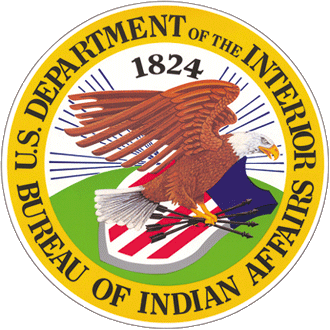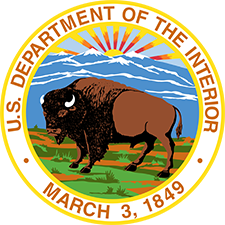WASHINGTON– Today, U.S. Secretary of the Interior Ryan Zinke directed all Department of the Interior bureaus, superintendents, and land managers at all levels to adopt more aggressive practices, using the full authority of the Department, to prevent and combat the spread of catastrophic wildfires through robust fuels reduction and pre-suppression techniques.
This year-to-date, 47,700 wildfires have burned 8 million acres across the country, with the majority of the devastation in the states of California and Montana. High-profile fires in Yosemite and Glacier National Parks have caught national headlines, however millions of acres of forest and grassland have burned in recent months.
"This Administration will take a serious turn from the past and will proactively work to prevent forest fires through aggressive and scientific fuels reduction management to save lives, homes, and wildlife habitat. It is well settled that the steady accumulation and thickening of vegetation in areas that have historically burned at frequent intervals exacerbates fuel conditions and often leads to larger and higher-intensity fires," said Secretary Zinke. "These fires are more damaging, more costly, and threaten the safety and security of both the public and firefighters. In recent fire reviews, I have heard this described as 'a new normal.' It is unacceptable that we should be satisfied with the status quo. We must be innovative and where new authorities are needed, we will work with our colleagues in Congress to craft management solutions that will benefit our public lands for generations to come."
The Secretary is directing managers and superintendents of units that have burnable vegetation to address the threat of fire in all of their activities, and to use the full range of existing authorities, to reduce fuels.
Bryan Rice, Director of the Office of Wildland Fire, said, "It is critical to fully consider the benefits of fuels reduction in the everyday management activities that we carry out for our public land management objectives, such as clearing along roadsides, around visitor use areas like campgrounds and trails, near employee housing areas, and within administrative site areas subject to wildfire."
The Department has lost historic structures in wildfires like Glacier National Park's historic Sperry Chalet lodge. In an effort to help prevent future losses, the Secretary is also directing increased protection of Interior assets that are in wildfire prone areas, following the Firewise guidance, writing: "If we ask local communities to 'be safer from the start' and meet Firewise standards, we should be the leaders of and the model for 'Firewise-friendly' standards in our planning, development, and maintenance of visitor-service and administrative facilities."
“I welcome Secretary Zinke’s new directive and his attention to the catastrophic fires taking place in many western states,” said Senator Lisa Murkowski, Chairman of the Senate Energy and Natural Resources Committee. “Treating our landscapes mitigates wildfire risk, increases firefighter safety, and makes our forests and rangelands healthy and resilient. We can no longer delay the implementation of this important work.”
House Natural Resources Chairman Rob Bishop said, "We must ensure our land management agencies have the tools and resources they need to protect communities and landscapes from catastrophic wildfire. Over the long term, Congress and the Administration must work together to reverse the sorry state of our federal forests and grasslands. I’m heartened to finally have an Administration that’s focused on actively managing and addressing the on-the-ground conditions that are contributing to our historic wildfire crisis. I hope to build on this by enacting comprehensive legislation to restore the health and resiliency of federal lands.”
"If we don't start managing our forests, the forests are going to start managing us," said Montana Senator Steve Daines. "The fires burning across Montana are a catastrophe, and we need all available resources to combat this threat. I applaud Secretary Zinke’s action to focus resources on attacking wildfires."
“I applaud Secretary Zinke’s effort to thin the threat. If we can reduce the fuel loads in our forests and rangelands we will provide our fire fighters more defensible space to do their jobs," said Idaho Senator James Risch. "We need bold actions like this not just for the hurricanes in the south and east but also to avert the devastation caused by the wildfires in the west.”
“More than 50 million acres in the United States are currently at risk for catastrophic wildfire. That is why we must act to prevent calamitous fires. Management actions taken by Secretary Zinke today will not completely stop the risk, but it is an important step forward in our fight to turn unhealthy, overgrown, and infested forests into thriving, healthy ecosystems," said Congressman Bruce Westerman. "I commend Secretary Zinke for recognizing this emergency situation and taking steps to address prevent further loss of life and property due to these preventable, catastrophic wildfires. I am committed to working with him and my colleagues in Congress to find a permanent solution to this problem that emphasizes active forest management as the first line of defense against catastrophic wildfires.”
With Western Fire season reaching its natural peak in September, the National Multi-Agency Coordinating Group (NMAC) elevated the National Fire Preparedness Level to “5”, the highest level NMAC declares, on August 10, 2017. Above normal major-fire activity continues to be observed across portions of the Pacific Northwest, Northern Rockies, northern Great Basin, and northern California. Fuel moisture levels and fire danger indices in these areas are at near-record to record levels for severity. Drier and warmer than average conditions across the central Great Basin and Southern California are allowing for the fine fuels to become more receptive to fire activity.
See the full memo below.
Memorandum
To: Assistant Secretaries
Heads of Bureaus and Offices
Regional Directors
State Directors
Superintendents
Refuge Managers
District Managers
Field Office Managers
From: Secretary
Subject: Wildland Fire Directive
In June of this year, Secretary of Agriculture Sonny Perdue and I gave direction on a broad strategy for addressing wildfire by managing our firefighting assets in the most efficient way possible. (2017 Direction to Wildland Fire Leadership Memorandum). As we anticipated, 2017 is challenging our wildland firefighting capabilities with a significant number of fires and acres burned to date. Nonetheless, I am pleased that you have taken to heart our direction to work together more effectively and to seek more opportunities to work with state and local partners. Secretary Perdue and I heard in Montana from local fire chiefs and county officials about the degree to which our teams have “collaborated from Day 1.” This collaboration has already made a difference, and I thank you.
It is well settled that the steady accumulation of vegetation in areas that have historically burned at frequent intervals exacerbates fuel conditions and often leads to larger and higher-intensity fires. These fires are more damaging, more costly, and threaten the safety and security of both the public and firefighters. In recent fire reviews, I have heard this described as “a new normal.” However, that does not mean that we should continue to address our challenges in the same ways that we have in the past. We must think differently about the threat of wildfire and how we manage public lands in ways that integrate fuels reduction – where it makes sense – into all our activities.
To our line officials – the field, district and refuge managers, and park and agency superintendents – I want to thank you for your response in deploying key staff to the wildfire emergencies (and now hurricanes) across the Nation. As the public continues to visit their lands in great numbers, we cannot await a weeks-off, season-ending event to think about how best to address the potential threat of catastrophic wildfires. Even as fires continue to burn, I ask that you think about a different way of managing public lands to better incorporate fuels management into your resource-management planning.
One of our Federal fire strategic goals is to ensure that landscapes and communities across all jurisdictions are resilient to fire-related disturbances in accord with management objectives. A key part of implementing such a strategy is carrying out activities that address vegetation composition and structure and also alters fuel loads to reduce hazards. Such methods of fuel treatment safeguard public and firefighter safety and protect our landscapes, scenic vistas, and natural and historic objects; our neighbors, nearby communities, and infrastructure; and our own administrative and visitor service assets and facilities.
For our managers and superintendents of units that have burnable vegetation, I am directing you to think about fire in a new and aggressive way. Address the threat of fire in all of your activities, rather than engaging only the fire staff. All land managers across the Department of the Interior (Department) have a responsibility, using the full range of existing authorities, to consider using fuels management to achieve their programs’ and units’ resource- and land-management objectives. Where dead and dying trees have become hazards that can carry fire across our boundaries or into areas that are a threat to values-at-risk, we must move aggressively to minimize that threat. If we don’t have the people on hand, we have authorities to contract it to capable resource managers in the private sector. It makes little sense to be thinning to protect structures when we see flames on the ridge and smoke in the air—fuel management is more effective when undertaken before fires break out.
Where our roads have narrowed over the years as vegetation and trees have encroached, even into ditches and onto shoulders, we should be clearing this vegetation away. In our administrative and employee housing areas where we have allowed the natural landscape to grow closer to our structures, we should remove the fire threat to create defensible space. If we ask local communities to “be safer from the start” and meet Firewise standards, we should be the leaders of and the model for “Firewise-friendly” standards in our planning, development, and maintenance of visitor-service and administrative facilities.
I will be asking our program officials at the Department level to call for appropriate reviews and identification of resource needs and data gaps. Each of you should ensure your fire management plans are up to date and include the identified needs for a robust fuels-management program to support wildfire prevention and suppression efforts to be developed and implemented by both fire and other resource staff.
I ask you to do the following: 1) use our existing policies more aggressively; 2) think differently about how those policies may be applied; 3) look for opportunities to partner with adjacent agencies, state and local governments, tribes, and private landowners to maximize resources; 4) look carefully at your existing management plans and ask if you are doing all you can today to address the threats of tomorrow; and 5) ensure that our landscapes are restored and maintained to meet our mission.
In our June memo, Secretary Perdue and I emphasized our implementation of Federal wildland fire policy and its emphasis on firefighter and public safety. That emphasis remains.
We must also identify ways to address the realities we face in a safer and more effective manner. We simply cannot afford to continue business as usual. We must do everything we can to address the steady accumulation of fuels on our Nation’s public lands and the resulting increased threats from catastrophic wildfires.
You and your staff are critical to making the changes necessary to better address the challenges we will face together in the future.
NOTE: Heads of bureaus and offices shall distribute this memorandum to all regional and/or state directors, district managers, field office managers, superintendents, and/or refuge managers.



